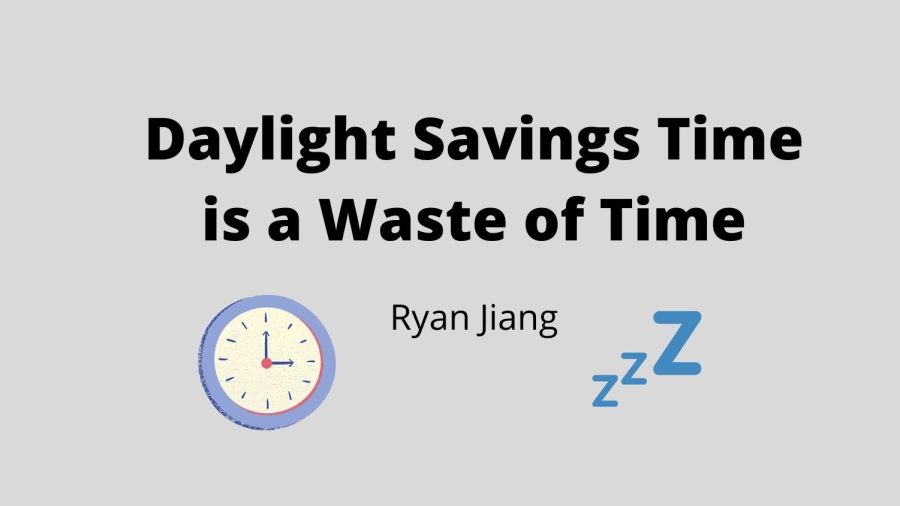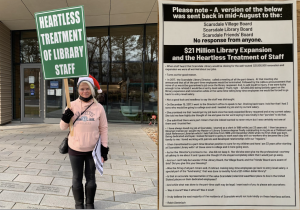Daylight Savings Time is a Waste of Time
Should the United States change its Daylight Savings Time policy?
March 31, 2022
On March 15, 2022, the U.S. Senate unanimously approved a bill that would make Daylight Savings Time (DST) permanent beginning in 2023. However, the Sunshine Protection Act, as it is known officially, must still be passed by the House of Representatives before President Joe Biden can sign it.
To briefly summarize the history of Daylight Savings Time in America, the time standard was adopted by the U.S. on March 31, 1918, as a wartime measure during World War I. The decision was made in the interest of adding more daylight hours to conserve more energy resources. It was later used again during World War II but repealed on September 30, 1945, as individual states began to impose their own times again. Almost 30 years later, President Nixon signed the Emergency Daylight Saving Time Energy Conservation Act of 1973, but Congress amended the Act and returned to Standard time in 1974.
As you can see, Daylight Savings Time has been used very inconsistently since it was first introduced in 1918. It’s reasonable to say that everybody has had their fair share of headaches when it comes to adjusting themselves and the clocks to the one-hour time shift. But if almost everybody dislikes the constant change from Daylight Savings Time to Standard Time, why do we still use it? DST was first introduced in World War I, so is America in a time of war? Not to the extent that we were during WWI and WWII. So is DST outdated and a waste of time? I certainly think so.
Firstly, saving energy through Daylight Savings is undoubtedly helpful in saving resources and preserving the environment. However, the system that is being used is highly outdated. The technological advancements that have been made between WWI and the present day have made drastic changes in how energy is consumed. Daylight Savings was implemented to discourage people from using energy by using daylight for lighting rather than gas and electric powered lights. Though Daylight Savings still accomplishes its goal in the present day, lighting is no longer the leading source of the constant consumption and overuse of energy.
Technology has come a long way since World War I, to say the least. When DST was first introduced, Thomas Edison had invented the incandescent light bulb just over 30 years earlier. After a century of technological developments, lightbulbs are now labeled LED this, LED that, but for a good reason. LED lightbulbs are known to be much more energy-efficient compared to their incandescent counterparts. So if anything, we are saving more energy by using efficient light sources, making the use of DST less effective than it once was. While staying on the topic of household energy use, the energy consumption of light bulbs has been overshadowed by other appliances like refrigerators, air conditioners, computers, etc. Most of these machines run for hours at a time, like air conditioners and computers, while others, like refrigerators, run 24/7. The change from Standard Time to DST has no effect on these appliances, rendering the one-hour shift utterly useless against the household machines that use the most energy.
In addition to these household appliances, countless infrastructural systems such as traffic lights, highway lights, subway stations, and internet servers consume tons of energy and continue operating regardless of Daylight Savings Time. Daylight Savings Time cannot be used to combat the overconsumption of energy in the modern world because it is simply outdated and ineffective.
Moreover, the one-hour time shift creates several problems for people worldwide. A one-hour sleep loss does not seem like much, but it can lead to life-threatening situations. According to data published in Current Biology, Daylight Savings Time is linked to a six percent increase in car accidents. Another Michigan study has also shown that the one-hour sleep loss from DST was associated with a 24 percent increase in daily heart attack incidents. Though the 24 percent increase is likely directed at a specific demographic, car accidents are much more universal and can affect anybody near a road.
Even though some countries may not use DST, communication with the countries that do will inevitably become a problem. Take the United States as an example. The U.S. already has different timezones for different regions. When introducing DST to the equation, each of those timezones will have a DST counterpart, further complicating communication and the time disparities with the rest of the world.
In the end, the bill to make DST permanent has yet to be passed by the House and the President, so it may be a long way until an official policy is decided upon. But with all the problems that come as a package deal with the constant switching between DST and Standard Time, it’d be better to save our time and energy and stick to one or the other.
























